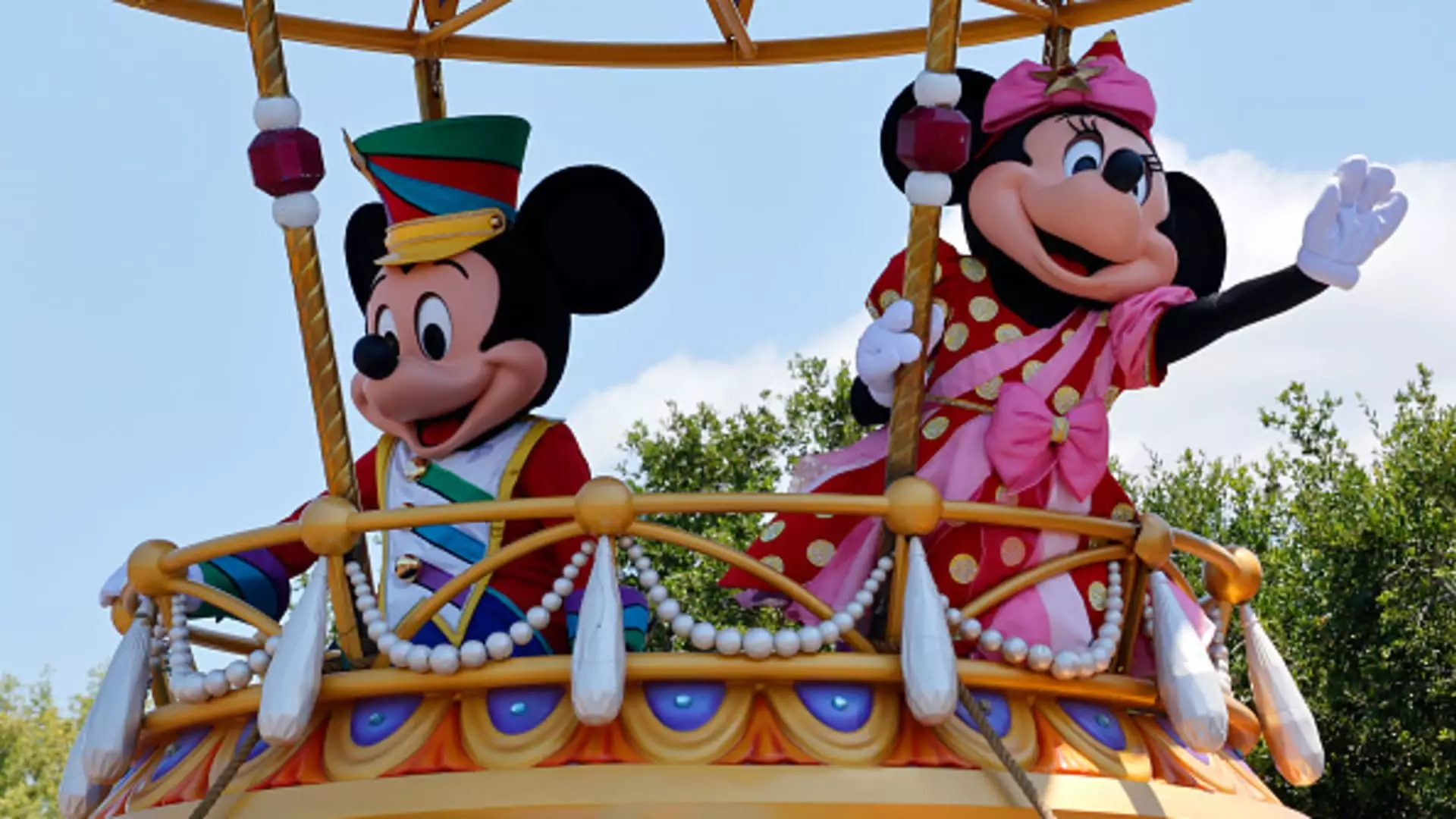Disney, a long-standing titan in the entertainment industry, has recently emerged from a challenging period, signaling a robust comeback that has revitalized investor confidence. Under the leadership of CEO Robert Iger, the company has made significant strides after enduring several quarters marked by budget cuts and a comprehensive overhaul of its streaming service. Thursday’s financial report revealed an impressive quarterly performance, suggesting that Iger’s strategies are beginning to yield positive outcomes.
Quarterly Earnings: A Strong Comeback
In the fiscal fourth quarter, Disney reported revenues of $22.57 billion, surpassing analysts’ expectations of $22.45 billion. This performance marked a pivotal moment as it demonstrated the company’s ability to rebound from prior setbacks. Adjusted earnings per share (EPS) soared by an impressive 39% from the previous year, reaching $1.14, which also exceeded the anticipated figure of $1.10. Such results spurred a notable 10% surge in Disney’s stock prices, a clear indication that investors are responding favorably to the company’s reinvigorated financial health.
The momentum generated during this quarter can be primarily attributed to a combination of strategic cost management and successful monetization efforts in various segments of the business. With improvements in cash flow and profitability in its direct-to-consumer streaming division, Disney positioned itself not just to recover but to thrive over the next few years.
Innovative Revenue Streams and Content Strategy
One of the key elements in Disney’s turnaround strategy is its multifaceted approach to generating revenue. As Iger highlighted during the earnings call, modern Disney films deliver value through an abundance of consumer engagement touchpoints. With streaming services, theme parks, merchandise, and gaming experiences all connected to its cinematic releases, Disney has effectively created a “multiplier effect” enhancing the financial returns on its content.
Looking forward, Disney’s ambitious content slate for 2025 includes highly anticipated titles such as “Captain America: Brave New World,” “Lilo and Stitch,” and “Avatar: Fire and Ash.” The strategic choice to integrate popular franchises with new offerings reflects a commitment to maintaining consumer interest and maximizing revenue. Furthermore, Disneyland’s expansion projects demonstrate the company’s devotion to enhancing the park experience, indicating a clearly defined growth trajectory.
Another notable development is the introduction of the ESPN Direct-to-Consumer service, anticipated to launch in the fall of 2024. The initiative aims to merge traditional sports coverage with cutting-edge technological features, potentially reshaping the viewing experience with AI-driven personalization and integrated betting options. This innovation positions Disney to better compete in the evolving landscape of sports entertainment.
The optimistic outlook laid out by Disney management indicates a significant turnaround ahead, as they forecast high single-digit earnings growth for the entirety of 2025. Such projections outperform the consensus of Wall Street analysts, who estimate a modest rise of just over 4%. Moreover, Disney anticipates substantial cash flow from operations, with expectations reaching roughly $15 billion, further solidifying its financial stability.
As part of its corporate strategy, Disney is prepared to implement share repurchase programs amounting to $3 billion, reinforcing investor trust and signaling management’s confidence in future prospects. The combination of effective cost management, expansion of profit margins through direct-to-consumer initiatives, and innovative monetization of ESPN could result in significant share price appreciation.
Disney’s resurgence doesn’t occur within a vacuum. It faces competition from major players such as Netflix, Comcast, and Warner Bros Discovery. However, Disney’s established brand equity, coupled with evolving revenue streams and park enhancements, positions it uniquely to argue for its substantial market presence. Its diversified portfolio makes it a formidable competitor that can leverage synergies across its various businesses.
Credibility and strategic execution are paramount, and Disney has been proficient at harnessing its assets effectively. The company’s ability to seamlessly blend its core entertainment offerings with innovative technological advancements will be crucial as it navigates the competitive landscape in the upcoming years.
Disney’s latest performance marks a watershed moment for the entertainment giant. Under Iger’s stewardship, the company has taken critical steps to address previous challenges while carving a path forward that is ripe with opportunity. With a focus on innovation and a clear growth strategy, Disney is not only recovering but strategically positioning itself for long-term success.
Investors have good reason to embrace the positive trajectory evidenced in Disney’s earnings report and future outlook. As it expands its content library, explores new technological integrations, and enhances park experiences, Disney is set to engage audiences and implement sustainable growth strategies that could redefine its role in the entertainment sector. The outlook is not just promising; it is indicative of a long-lasting transformation that could benefit all stakeholders.

